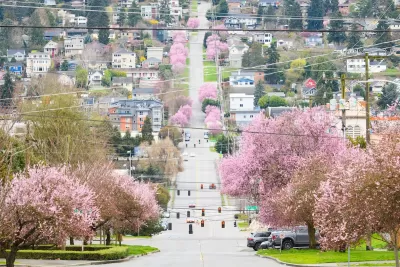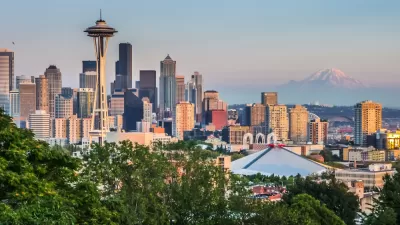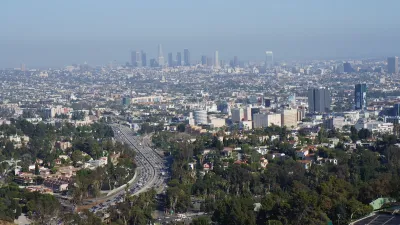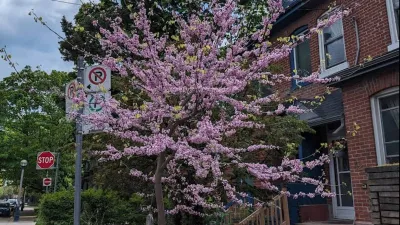Seattle’s goal to cover 30 percent of the city with tree canopy by 2037 doesn’t need to be sacrificed in favor of density. There’s a better way.

Seattle could more easily reach its goal of having 30 percent of the city covered by trees by 2037 by eliminating a third of city-owned parking spaces in favor of trees and plants, writes Ryan DiRaimo in an opinion piece for The Urbanist.
“It’s not as far-fetched as it sounds. Paris has taken on a similar pledge, promising to replace 60,000 parking spots with street trees by 2030. Paris spans just 41 square miles, so the equivalent goal in 84-square-mile Seattle would be double,” DiRaimo adds.
Most of Seattle’s tree canopy loss between 2112 and 2021, according to the Tree Canopy Assessment, has happened in the city’s parks (46 percent) and single-family neighborhoods (35 percent). Just 10 percent of tree loss occurred due to multifamily development.
According to DiRaimo, “Seattle owns more than 15,000 intersections citywide, and 9,600 of them are on quiet, low-traffic streets inside our grid of neighborhoods. If we convert eight parking spaces into trees, build planted curb bulbs and roundabouts with trees, then each intersection can become 17 new trees. Doing this citywide adds nearly 165,000 trees.”
Ultimately, there’s no need to pit density against trees when pavement takes up a third of the city. “We shouldn’t be fighting more housing as we lower emissions, we should encourage it and find solutions that include trees.”
FULL STORY: Op-Ed: Convert Street Parking to Trees to Hit Seattle Canopy Goals Sooner

Planetizen Federal Action Tracker
A weekly monitor of how Trump’s orders and actions are impacting planners and planning in America.

Map: Where Senate Republicans Want to Sell Your Public Lands
For public land advocates, the Senate Republicans’ proposal to sell millions of acres of public land in the West is “the biggest fight of their careers.”

Restaurant Patios Were a Pandemic Win — Why Were They so Hard to Keep?
Social distancing requirements and changes in travel patterns prompted cities to pilot new uses for street and sidewalk space. Then it got complicated.

Platform Pilsner: Vancouver Transit Agency Releases... a Beer?
TransLink will receive a portion of every sale of the four-pack.

Toronto Weighs Cheaper Transit, Parking Hikes for Major Events
Special event rates would take effect during large festivals, sports games and concerts to ‘discourage driving, manage congestion and free up space for transit.”

Berlin to Consider Car-Free Zone Larger Than Manhattan
The area bound by the 22-mile Ringbahn would still allow 12 uses of a private automobile per year per person, and several other exemptions.
Urban Design for Planners 1: Software Tools
This six-course series explores essential urban design concepts using open source software and equips planners with the tools they need to participate fully in the urban design process.
Planning for Universal Design
Learn the tools for implementing Universal Design in planning regulations.
Heyer Gruel & Associates PA
JM Goldson LLC
Custer County Colorado
City of Camden Redevelopment Agency
City of Astoria
Transportation Research & Education Center (TREC) at Portland State University
Camden Redevelopment Agency
City of Claremont
Municipality of Princeton (NJ)





























